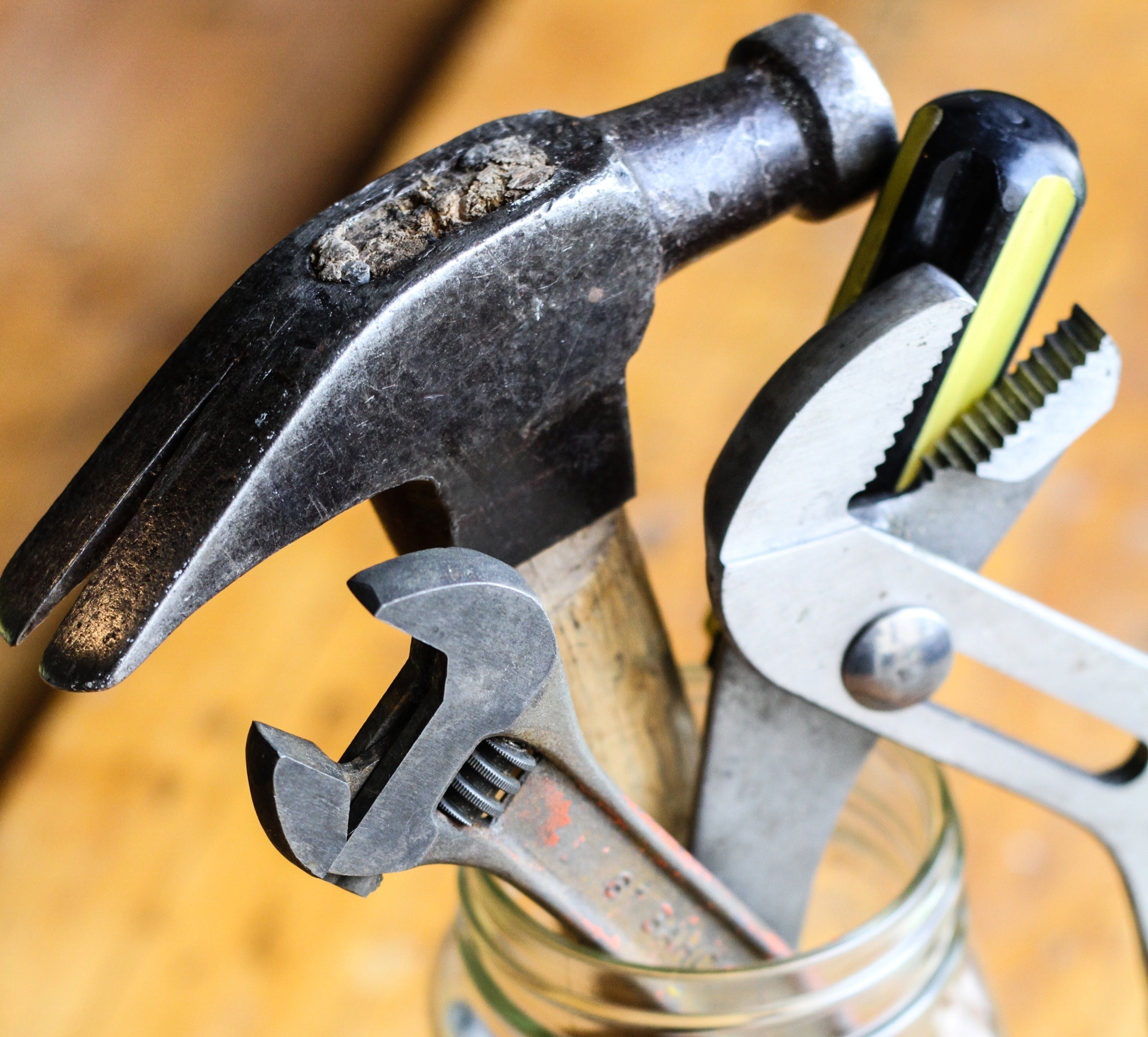
Photos by Ashley Poskin
When water finds its way to the surface of a metal tool and sits there for days on end, the result is that an oxidation process can take place and leave your tool rusty. But this doesn’t necessarily mean it’s the end of the road for that item; it will take elbow grease, but you’ll be glad to know that pesky rust can be removed from a metal surface.
A few of these methods for removing rust might sound far-fetched, but never fear, dear readers—we’ve tested and approved each one before passing it on to you.
Baking Soda
Method: Rinse the metal item and shake dry. Dust with baking soda (it will stick to the damp areas), making sure to cover all rusty areas. Leave the item for an hour or so, then scour with steel wool or a metal brush, removing the rust down to the metal. (If cleaning a pan, use a scouring pad.) Rinse, and towel dry.
Best used on: Less severe rust, baking pans, light rust rings, thin metal.
Pros: Simple method using one cheap, common ingredient.
Cons: Takes up to one hour before you can really start to work away the rust. The key to rust removal is using the steel wool or scouring pad, so be prepared to use some elbow grease.
Vinegar Bath
Method: Submerge your item in white vinegar and let sit overnight. Remove your item and scrape with a metal brush or steel wool. If your item can’t be submerged, soak rags in white vinegar and wrap the rusted area.
Best used on: Significant rust found on tools or items that are all steel and can be submerged without compromising the integrity of other surfaces.
Pros: Super easy “let sit and forget” method. Takes hardly any elbow grease to work away the rust once you remove item from the vinegar.
Cons: The item needs to soak overnight, so it takes a while to achieve results.
Potato and Dish Soap
Method: Sounds crazy, but it works like a charm! Cut your potato in half and cover the open end with dish soap. Use the potato like you would a scouring pad and watch the rust fade away as it reacts with the soap and potato.
Best used on: Small, less-stubborn rust stains on easy-to-reach surfaces.
Pros: Easy and relatively fast method for removing rust. Works great on kitchen appliances. Uses items you probably already have in your pantry.
Cons: This is probably the messiest method for removing rust. Be sure to work over a sink, or somewhere outdoors where cleanup is easy.
Citric Acid
Method: You might not have this laying around the house, but it can be easily found at most health food stores. Add a few inches of hot water to a bowl and sprinkle in 2-3 tablespoons of the citric acid. Submerge your item and let sit overnight, remove in the morning, scrub off lingering rust flecks with a brush, rinse, and pat dry.
Best used on: Significant rust found on tools or items that can be submerged without compromising the integrity of other surfaces and coatings (citric acid will remove paint!).
Pros: Works like a champ! Another “let sit and forget” method.
Cons: Most people won’t have this ingredient in their pantry, but it can easily be found in health food stores or online.
Lemon and Salt
Method: Generously coat the rusted area in a layer of salt, cut a lemon (or lime) in half, and squeeze the juice over the salt. Let the mixture sit, then scrub away the rust with the rind. If rust remains, repeat the procedure and let the salt and juice sit for another hour or two, until rust disappears completely. Rinse, then pat dry.
Best used on: Less stubborn rust stains. Works great for kitchen knives that have little bits of rust here and there.
Pros: Minimally abrasive process, uses items you’ve probably already got at home.
Cons: If you’re scrubbing rust off a kitchen knife, this process can be tricky to navigate without cutting yourself. Be sure to wear a protective glove, or work on a flat surface to minimize the risk of accidents.
Ashley Poskin traded the quiet life of a small town in a big house for the hustle and bustle of the Windy City. On any given day you might find her working on a freelance photo or blogging gig, wrangling her little darling, or walking Chuck the boxer.